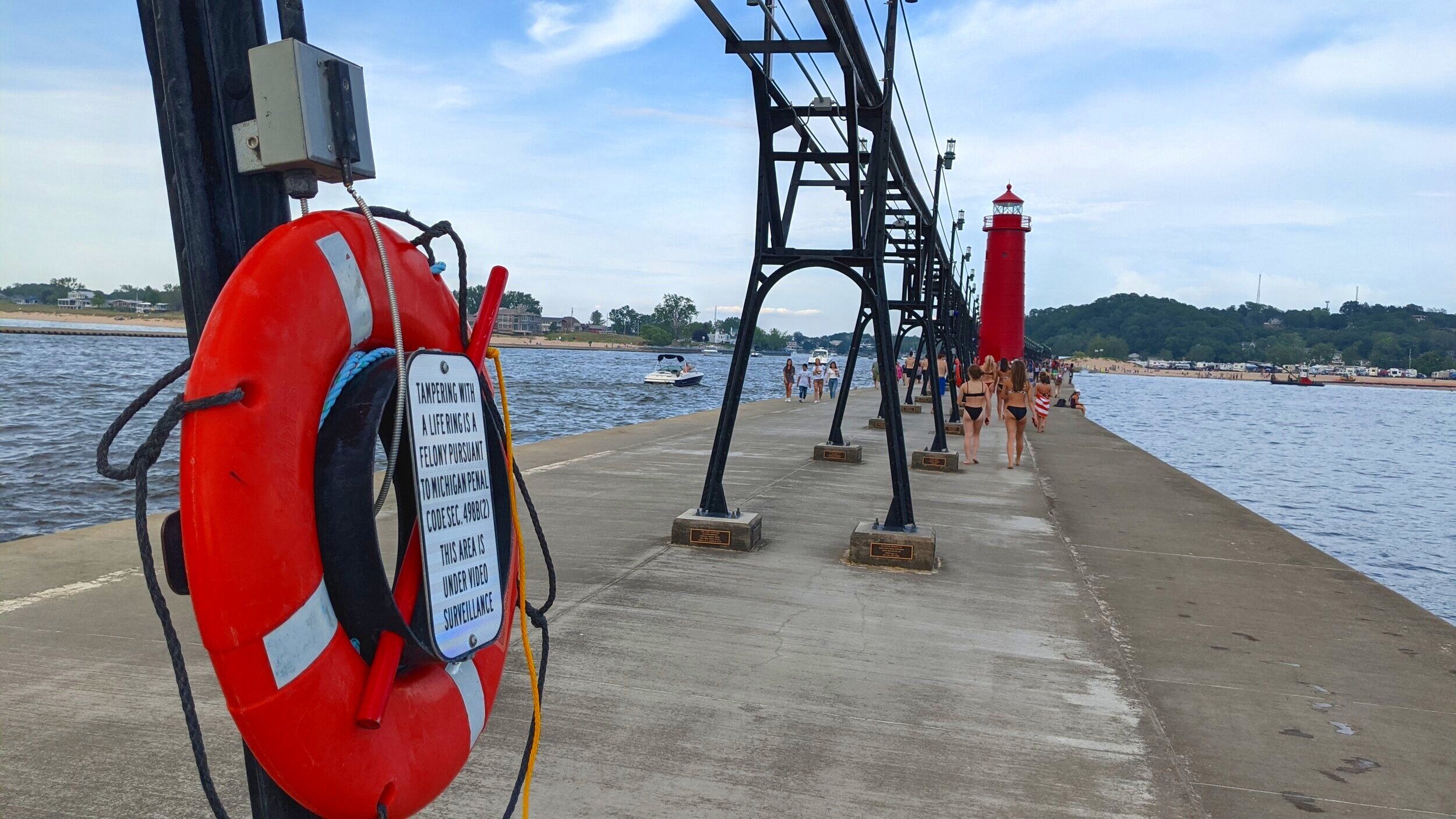
Water Safety for Community & Park Workers

How Safe Is Your Beach, Really?
We know you have a lot on your plate and keeping your residents and visitors safe isn’t easy.
We want to make it a little easier for you.
Here are recommendations from our many experts – from all eight Great Lakes states and Ontario.
You may have most, some, or none of them, so let’s get started on a plan to make your beach a little safer every year.
1. Lifeguards
Lifeguards are the real-life superheroes. Drownings happen quickly, and by the time first responders can get there after someone calls 9-1-1, it’s often too late for a rescue.
Untrained beachgoers try to act as lifeguards where there are none when someone is in trouble, and they often become drowning victims themselves.
Ocean beaches have them. Great Lakes beaches can be even more dangerous for swimmers, so we need lifeguards, too. They are the best investment you can make for your residents and visitors.
See more below.

2. Life rings
Life rings with attached line, installed every 150-200 feet along your beach or pier, are at the core of our recommendations.
Orange life rings are a well-known symbol of marine safety as well as a multi-use tool. A life ring can be tossed, dropped from a structure, or dragged out by a swimming rescuer. An attached line is a means to try again if the first toss is off target, or a way to pull a victim to safety.
If the funding, infrastructure, and political will are available, it is possible to have a life ring stand that automatically calls 9-1-1 and relays the location as soon as the ring is lifted from its cradle, aiding dispatchers.
Recommended Life ring: Cal-June, Type IV Throw Ring Buoy, 35 lb. buoyancy, 24 in. diameter, orange with reflective tape, and grab handles (or equivalent)
3. Loaner Lifejackets
Not everyone can afford a lifejacket or maybe they forgot theirs at home. They need not worry about keeping themselves or their kids safe if you have a loaner lifejacket station for them.
Trust the honor system, but add, “Property of…” and buy extras just in case they forget.
Youth Life Jacket: Kent, Nearshore Type II Buoyant Life Jacket for youth 50-90 lbs (or equivalent)
Adult Life Jacket: Stearns, Crew Mate Type I Offshore Life Vest, 22 lbs. buoyancy rating will hold 2, possibly 3 adults, depending on weight (or equivalent)

4. Beach Warning Signage
Whether someone is visiting your beach for the first time or is a lifelong resident, they may not know the potential dangers and how to avoid them.
Our universal beach warning signs were piloted in all 43 Michigan coastal state parks. They are now updated for all Great Lakes shorelines in both English and Spanish, and include QR codes for instant access to warnings from the National Weather Service.
5. Rescue Equipment Stations
Ideally, every beach and pier would have full rescue equipment stations, complete with warning signage, life rings, rescue tubes/boards, throw bags, loaner lifejackets, and flag/LED warning systems, brochure holders, 9-1-1 call boxes, and webcams.
These stations can prevent a tragedy before it happens, and provide resources to help ensure safe rescues if needed. Think big. Make your beach the safest anywhere.
Are you a trainer or speaker?
Beach and park workers wear many hats, including trainer. Do you offer training for your residents and visitors? Do you have the latest expert content and best practices for your workshops? We can help.
Whether it’s joining you in person or via Zoom to do a special session on water safety, or providing you with our educational materials to present them yourself, we can help.
Interested in adding drowning prevention content to your training? We’re a click of this button away.
Are you doing all you can to keep your residents and visitors safe?
If you have a sign like this one, you could be doing more.
We understand you have limited budgets and have to make difficult decisions on how to allocate funding. We know some voices are louder than others and it isn’t always clear who is putting safety first.
But…
Are you listening to the lawyers instead of your own public safety experts? Are you believing the myths of liability? Are you saying there’s NO money for ANY of the safety features recommended above?
Feel stuck? Let us help you get unstuck. Contact us for expert recommendations, and be a force for good.

We Are Here to Help
Ready to do more to make your beach safer, but aren’t sure where to start?
The Great Lakes Water Safety Consortium is now offering consultation services to help community and park leaders discover and implement ways to make their beaches safer.
"After reading the Consortium's e-newsletter, The Wave, I contacted them to help in Sheboygan's efforts to continuously improve the safety of our beaches on Lake Michigan. They shared several best practices that we intend to adapt and use for our specific needs."
– Joe Kerlin, Superintendent of Parks and Forestry, City of Sheboygan, Wisconsin
The initial consultation is free. If further in-depth sessions are needed, we will assemble a team of experts from our 1,000+ members, based on your unique situation, to help you develop a custom solution.
Don't wait until a drowning tragedy happens at your beach. Proactively seek help from water safety experts to maximize the chances of a safer year for your many residents & visitors.
Interested in a free initial consultation? Email us here.
Best Practices for Lifeguards
Download our best practices for Great Lakes guarded beaches, as well as recommendations for lifeguard equipment, both from our Lifeguarding & Beach Rescue Action Committee.









